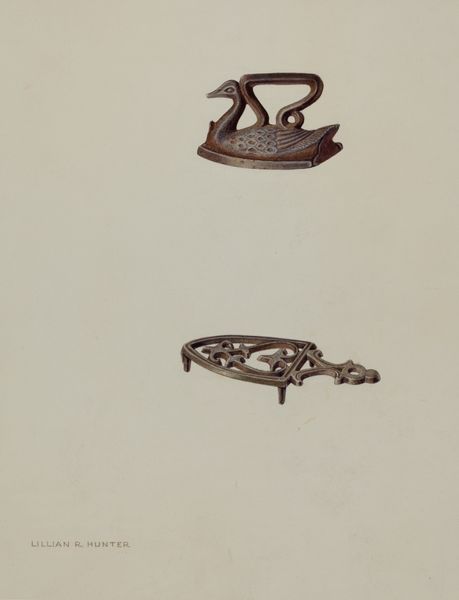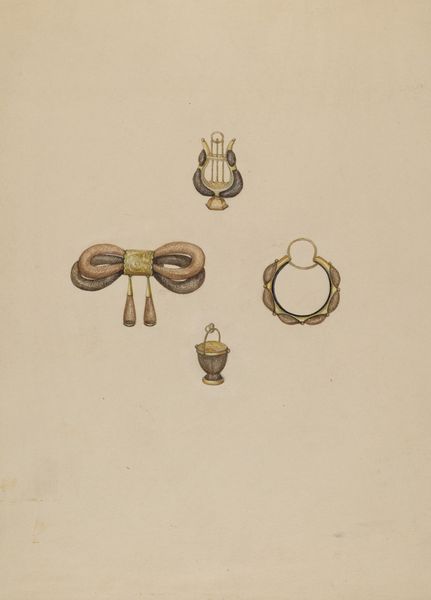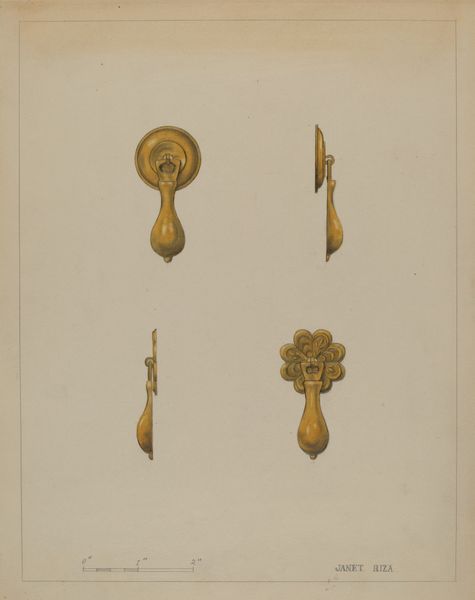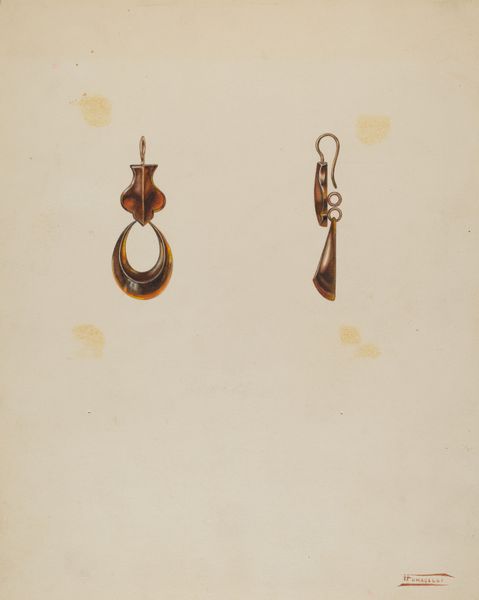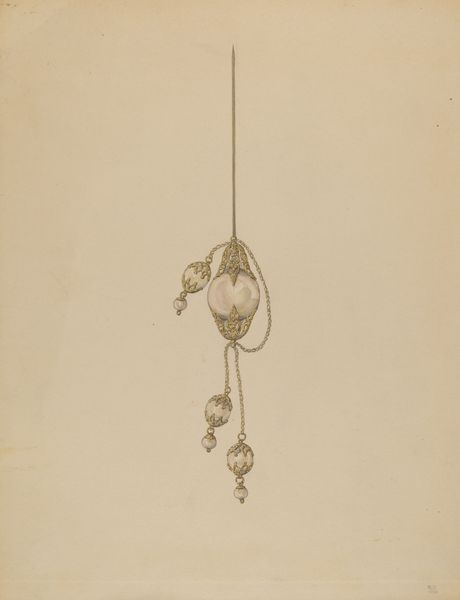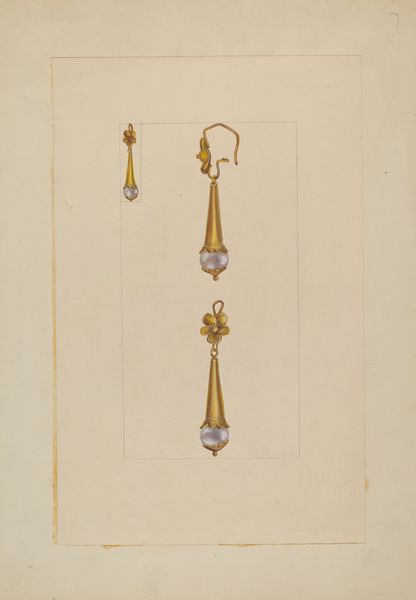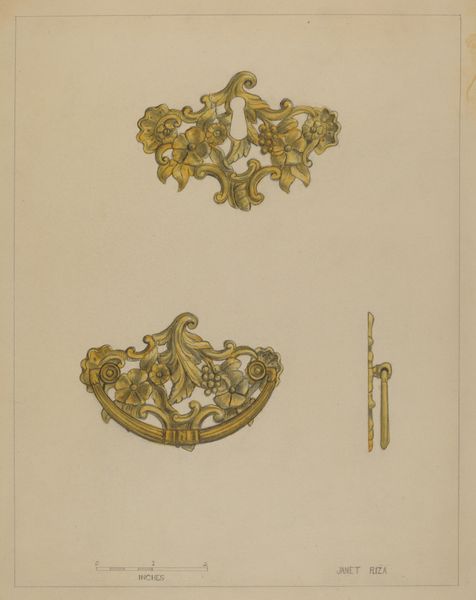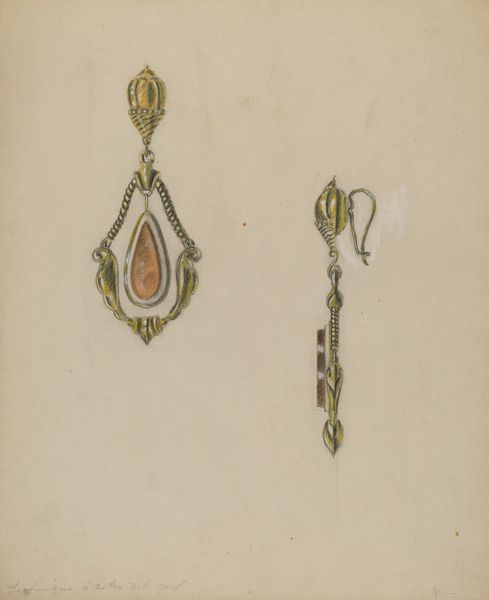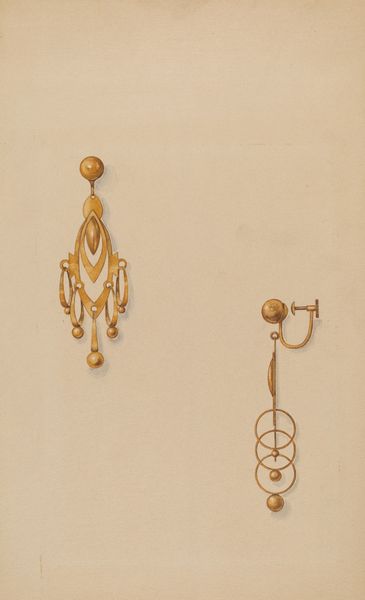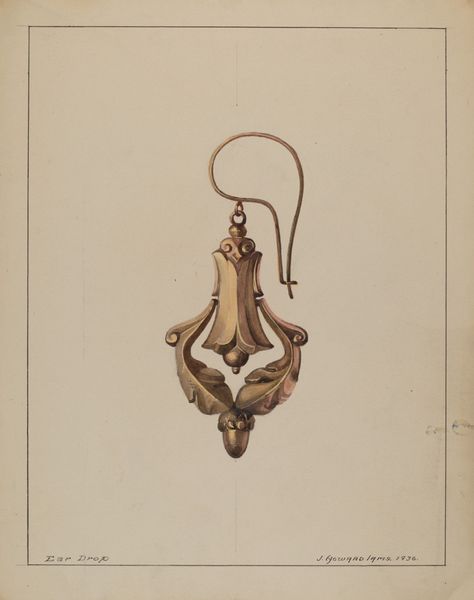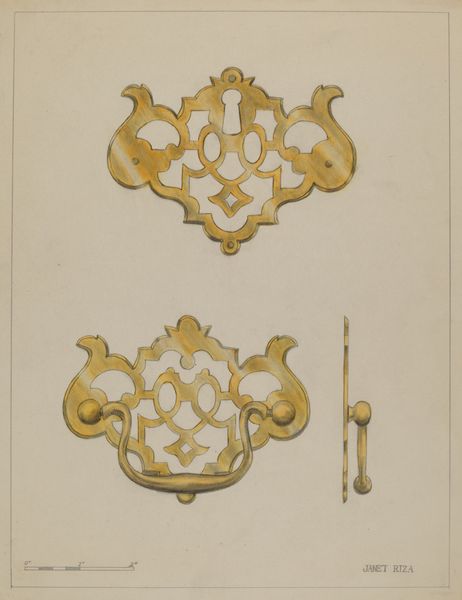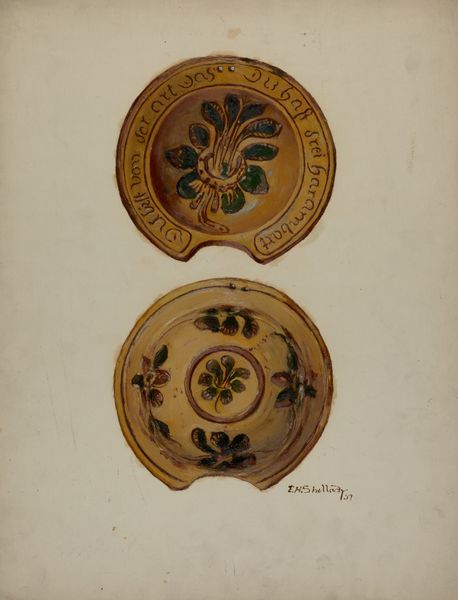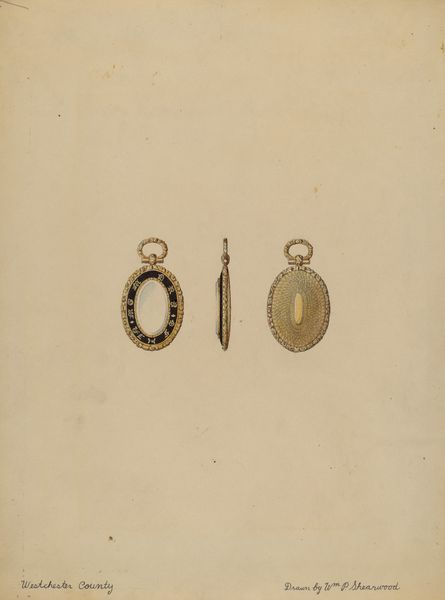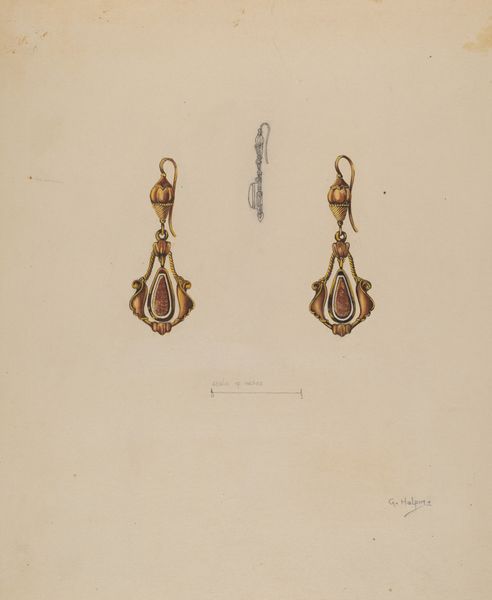
drawing, watercolor
#
drawing
#
watercolor
#
pencil drawing
#
decorative-art
Dimensions: overall: 32.4 x 24.5 cm (12 3/4 x 9 5/8 in.)
Copyright: National Gallery of Art: CC0 1.0
Editor: This is Harry G. Aberdeen's drawing of a "Locket for Perfume", and it looks like it uses watercolor and pencil. There's something so delicate about it, almost fragile, despite the detail. What historical context informs your view of this work? Curator: These delicate objects were deeply entwined with Victorian notions of femininity and status. Perfume lockets, often worn close to the body, literally embody the intimate connection between personal adornment and societal expectations. They signified not only wealth but also a woman's role in cultivating an alluring presence. What does it suggest to you that the object’s size is carefully specified? Editor: That's interesting. Knowing that makes me see it in a new way. The 'exact size' inscription feels like a clue, like we're meant to consider the practicality versus the decoration. Does this point to an intention behind it being designed? Curator: Absolutely! Consider how the very act of carrying perfume becomes a statement. It is controlled and deliberate. We might also ask: Who had access to perfume, and who was excluded? These objects reflect an intersection of gender, class, and consumption that merits our attention. The decoration, rendered in such detail, tells us of craftsmanship, while it served a mostly privileged section of society. Editor: I hadn't thought about access like that before. It changes the meaning from a pretty trinket to a status symbol loaded with social implications. It becomes almost...political. Curator: Precisely! Recognizing the layers of power encoded in these seemingly innocuous objects encourages us to think critically about beauty standards and social hierarchies, and how they continue to operate today. Editor: Thank you. I'm definitely seeing much more in this drawing now than when I started! Curator: And that's the power of situating art within its social and political contexts. We begin to understand that beauty itself is never neutral.
Comments
No comments
Be the first to comment and join the conversation on the ultimate creative platform.
